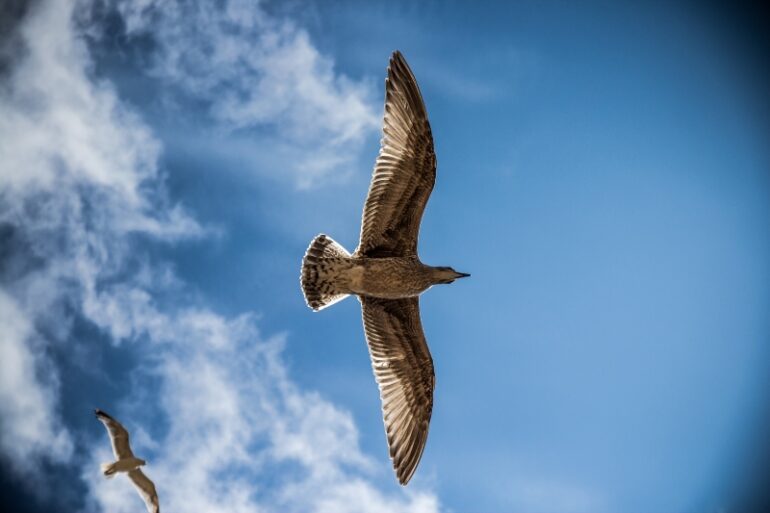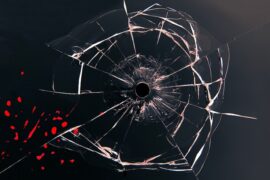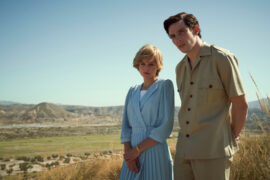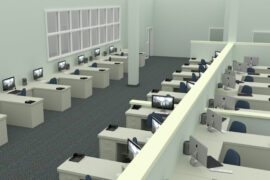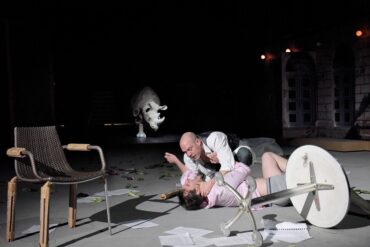Hajime Isayama draws attention to political and philosophical topics such as freedom and captivity through the story of manga-adapted anime series Attack on Titan. Thanks to various metaphors and clever images, it enlightens the viewers and makes the necessity of certain human rights more visible.
By Alican Albayrak
On that day, mankind remembered: The fear of being ruled by them… The disgrace of being imprisoned in these birdcages…
After witnessing the tragedy and cruelty of the world at a young age, Eren Jäger becomes dead set on killing all the Titans and utters this quote in the first line of Attack on Titan.
Hajime Isayama penned Attack on Titan in 2009, and the anime adaptation began airing in April 2013. Since then, it has gained worldwide recognition as a gripping and political anime series that tackles some of the most controversial issues, such as captivity, cruelty, and freedom. The series addresses many philosophical themes around the brutal clash between humans and Titans which leads to a clash of ideologies. These themes have helped it become a cultural phenomenon even for non-anime fans with its dystopic, epic and tragic storyline. It has won many awards, including Anime of the Year (2022) from Crunchyroll Anime Awards. The series is now available to watch on Crunchyroll.
A Beautiful Dystopia
People try to survive in a post-apocalyptic middle-aged world on a massive island called Paradis, surrounded by three gigantic concentric walls. Humanity is no longer at the top of the food chain but Titans – giant humanoid creatures that prey on humans wandering outside the Paradis Island. No one is allowed to go outside the fifty-meter-high walls except the Survey Corps, one of the three military units consisting of an elite military division. Besides many challenges inside the Walls, such as traitors, and mistrust of people, the Survey Corps has the most dangerous mission due to high death rates: to venture beyond the Walls that protect humanity in order to gather information about Titans. However, most students of the military force desire to join the Garrison that patrols inside the Walls and guards the king.
After a long Titan-free period inside the Walls, a mentally and physically devastating incident occurs. After some unusual Titans break the walls, other Titans invade inside the first wall of Paradis Island. A passionate child named Eren Jäger, keen on exploring the beyond the Walls, becomes furious and makes it his life goal to kill all the Titans after his mother is eaten by one of the Titans before his eyes.
Unprecedented and Realistic
The series is sure to captivate the audience with stunning visuals, inspirational soundtracks, excellent voice acting, well-developed characters, and a provocative and thrilling action-packed narrative. With many foreshadowings, plot twists and an almost unpredictable story line, Attack on Titan successfully amazes its audience.
The visual animation of the series is top-notch. The Titans’ portrayal is so grotesque and unsettling that it might give the audience goosebumps. Additionally, the choreographic and epic war scenes are breathtaking and compelling from the very beginning. With the use of traditional and modern drawing techniques and CGI, the series creates highly detailed character designs and illustrates feelings and inner conflicts of the characters through their rather realistic eyes in particular. They are truly the windows to their souls.
The soundtrack matches the scenes well, offering a variety of atmospheric and emotional effects. Some of them are truly epic. The way how the music type changes through the end of the last season with the development of the characters is well-designed. For instance, the tone of the soundtrack of the first season is more aggressive, whereas in the last season it is fitting into the dark and emotional tone. Moreover, the voice acting is authentic and not overly exaggerated, unlike some other anime series.
The development of each character is well-written. There are many dynamic characters that surprise the audience with their decisions. For instance, in Eren’s character development, one can witness a bildungsroman-like story. The cruelty of the world dramatically changes his personality as he challenges it, adapts to it and evolves. Eren puts the viewer in one of the biggest dilemmas in the anime world: whether he is a protagonist or an antagonist. Since the last part of the last season has not yet been released, the answer is open to interpretations. However, the events are not only centered around him. With flashbacks, the series allows the audience to witness the story of many other main characters and their impacts on the plot. Some of them represent certain ideologies with their decisions and behaviors throughout the series, adding depth to the story and making the audience have empathy with almost every ideology. Who the audience will be cheering for may often change as getting closer to the end of the series.
Captivity
As one of the important themes of the series, captivity plays a huge role in the story since the main conflict occurs because of the people’s imprisonment inside the Walls. In that sense, Attack on Titan can be interpreted as a conceit. There are countless metaphors and symbols that signify the limitations of the people due to the fear of Titans. As an example, some religious people called Wallists, who worship the Walls as sacred and protective object, also have an essential place in Attack on Titan. They support the idea of living inside the Walls and not interfering with anything related to them, not even repairing them. Furthermore, most people do not even think there would be another life, a different nature beyond the Walls. This ideology is reminiscent of Plato’s allegory of the cave. Something strikingly similar occurs in Attack on Titan: the cave refers to the prison-like Paradis Island, and the Walls are the norms and moral values instead of chains. In the first episode, it can be understood that those norms cannot protect people for a long time but limit them.
The Titans might symbolize the corruption of innocence and the weaponization of innocent people to serve the benefits of the powerful. As they are in a human shape, they have little intelligence and act on their primal instincts, focused on consuming and corrupting. Therefore, they can be a personification of humanity’s ignorance. To be swallowed by a Titan might represent imprisonment in his belly, or the darkness of ignorance, just like the prophet Jonah is swallowed by a big creature, according to some narratives.
The world is a cruel place.
This quote is repeated several times throughout the story. It is especially ruthless to the weak. The series portrays the tragic situations of children, refugees and minorities. Those illustrations give a tormenting feeling to the audience. However, the cruelty is dealt with by many beautiful realistic events that become enlightening and create an awareness of major problems of real life. Each ideology in the series, such as anti-natalism, capitalism, racism, classism or anthropocentrism, creates conflicts and destruction. Because of the irresponsible and greedy powerful ones, innocent and poor people may experience all the pain, but this system is no longer accepted and challenged by anger and unity.
Freedom is the biggest motivation for most of the main characters in Attack on Titan. They sacrifice a lot to attain it. The meaning of freedom evokes different feelings in almost every character: while Armin becomes hopeful and cheerful after learning about the existence of oceans, Eren, for instance, becomes angry with the current system that has limited himself and his loved ones for a long time. They attempt to be in the Survey Corps, in which soldiers have freedom of wings patched on their uniforms; they move and fight by flying, which serves as a symbol of freedom, thanks to a very interesting tool, the vertical maneuvering equipment.
Cruel but Beautiful
It is almost the end of an the era. Ten years later, the first episodes of the last season of Attack on Titan were aired on the 4th of March. It highlights real-life struggles and grabs the attention of the audience, with numerous references, for example to German history, architecture and music. Although it may not be a perfect series according to some anime fans due to its slow narrative style, with its heart-warming and heart-breaking effects, it can be said that it is still loved. Even though the aim is to show the terrific side of the world within a dystopian setting, it offers a roller-coaster ride of emotions. In that sense, the soldier Mikasa Ackerman’s quote defines both this series and life itself:
The world is cruel and merciless, yet it’s also beautiful.


